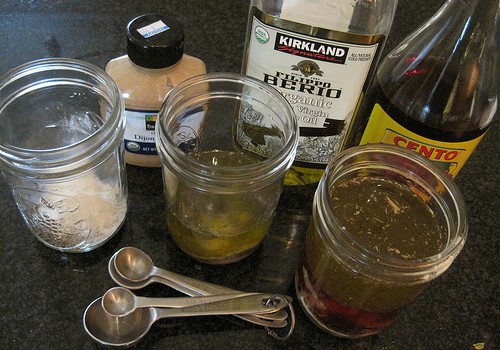
Salad dressings
Salad dressing is the downfall of many calorie-restricted diets. The main ingredients in most salad dressings are oil--which packs 100 calories per tablespoon--and sugar or sugary fruits. If you could be happy with just a teaspoon per bowl, your salad would remain a great diet food. But the fact is, the natural inclination of many dieters is to mix equal parts of salad and salad dressing. It tastes great, but it makes salad more of a threat to your waistline than a fried pork chop or a baked potato with the works (not that we're recommending them). Try adding flavor to your salad with lemon juice, herbs, and salt. And if you just have to have salad dressing on your salad, take it on the side, dipping your fork into the dressing with each bite rather than pouring it all over your salad.
- Important notification about information and brand names used in this slideshow!
- Photo courtesy of Julie Magro by Flickr : www.flickr.com/photos/magro-family/5673326548/
- www.healthaliciousness.com/articles/highest-calorie-foods.php
- http://xfinity.comcast.net/slideshow/news-10fatteningfastfooddishes/

Nachos
Nachos are fun food. And nachos are delicious. The crispness of the chips, the gooeyness of the cheese, the heat of the jalapenos, and the savory spicy picada hamburger meat are just plain addictive. They are also extremely high in fat and in calories, plus the kind of fat in nachos is the kind that increases the production of inflammatory hormones--that make you even fatter. If you have to have your nachos, keep the flavor but ditch the excess calories by substituting sour cream for some of the cheese, by using low-fat instead of full-fat for part of the cheese, and by slicing the avocado just a little thinner. If you can see the ingredients, you will taste them. Just slice them thinner!
- Important notification about information and brand names used in this slideshow!
- Photo courtesy of Steven Depolo by Flickr : www.flickr.com/photos/stevendepolo/3427412201/
- ehow. How to Make a Low-Fat Nacho. http://www.ehow.com/how_4717548_make-lowfat-nachos.html. Accessed 15 February 2014.

Fried Foods
Just about everybody loves fried foods. It isn't just the mouth-satisfying feel of fat. It's also the crunch, and the crispness, the browning, and the caramelization of the natural sugars in the food that has been fried. We aren't going to tell you that no-fat frying tastes the same. It doesn't. However, you can make your fried foods less of a calorie bomb by baking foods until they are nearly cooked through, and then frying them briefly just until the outside is crispy, crunchy, and colorful. The longer your keep food in the fryer, the more fat is absorbs--so do most of your cooking outside the fryer, frying at the very end just for added flavor and color.
- Important notification about information and brand names used in this slideshow!
- Photo courtesy of Stacey Huggins by Flickr : www.flickr.com/photos/staceyhuggins/5055679094/
- Weight Loss Answers. How to Lower the Calories in Fried Chicken. http://weightloss.answers.com/calories/how-to-lower-the-calories-in-fried-chicken. Accessed 15 February 2014.

Processed Meats
Don't be fooled by "low calorie" deli meats sliced thin and labeled as containing 20 to 40 calories per serving. Even when processed meats are not loaded with fat, they are loaded with salt, and all that extra salt causes you to retain water weight. The best meats for sandwiches and snacks are thinly sliced roasted meats you roasted yourself. You'll know they are not loaded with salt--a little brining for tenderness or salting for flavor is fine, but you won't have to add as much salt as the commercial meat maufacturers because you don't have to worry about shelf-life. There's no such thing as a low-fat hot dog. Even the reduced fat weiners are still over 50% fat. Want a hot dog? Enjoy! But just eat one.
- Important notification about information and brand names used in this slideshow!
- Photo courtesy of Martin Reynolds by Flickr : www.flickr.com/photos/hobbit_71/5313699580/
- Health Magazine. Best Low-Fat Hot Dog. http://www.health.com/health/gallery/0,,20511295_10,00.html. Accessed 15 February 2014.
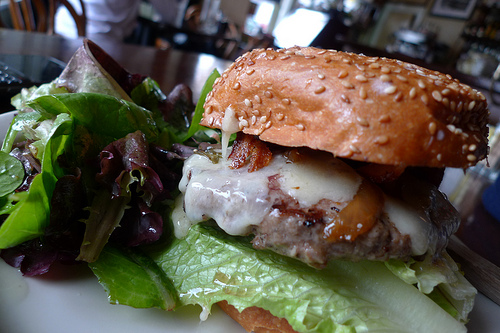
Burgers
Hamburger is a not a natural enemy of low-calorie diets. Sure, 20% fat is needed for the right juiciness and texture on the grill, but the lean portion of the burger contains conjugated linoleic acid, a healthy fat that offsets some of the "bad" fat in the burger. Where dieters go wrong with hamburgers is with the extras, the extra patty, the extra bun, the extra cheese, the extra mayo or Thousand Island dressing, and all the salty pickles, bacon, relishes, and peppers. Keep your burger simple, fresh, and delicious. And skip the fries. If you can eat just a (one) burger, and not a double- or triple- with bacon, avocado, or cheese, you won't do appreciable damage to your diet. Vegetarian burger options are better if you don't drown them in mayo or, as some people do, bacon and cheese.
- Important notification about information and brand names used in this slideshow!
- Photo courtesy of Ron Dollete by Flickr : www.flickr.com/photos/saucesupreme/5441630250/
- Health Magazine. The Best Burger Recipes. http://www.health.com/health/gallery/0,,20388238_1,00.html. Accessed 15 February 2014.
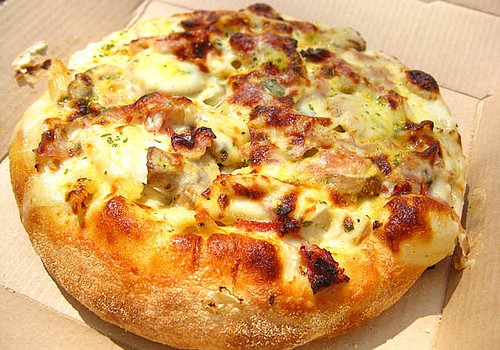
Chicken Carbonara
Chicken carbonara presses lots of buttons. It has pasta. The pasta is dressed in a creamy sauce with eggs and bacon. guanciale, or pancetta, topped with grated Pecorino or Parmagianna cheese. So if you add a grilled chicken breast it's healthy, right? Wrong! Even if you make a broccoli carbonara, a mushroom carbonara, or a snow pea carbonara--which you'd never see in Italy--the pasta, eggs, cheese, and bacon pack just too many calories to make this a diet-safe choice. Save carbonara for special occasions, and then make sure you cook or order the best carbonara you've ever tasted. But once or twice a year just has to be enough.
- Important notification about information and brand names used in this slideshow!
- Photo courtesy of Jason Lam by Flickr : www.flickr.com/photos/mesohungry/3470065776/
- Anthony F. Buccini, "On Spaghetti alla Carbonara and Related Dishes of Central and Southern Italy", in Richard Hosking, Eggs in Cookery: Proceedings of the Oxford Symposium on Food and Cookery 2006, Prospect Books 2007, ISBN 1903018544, p. 36-47.
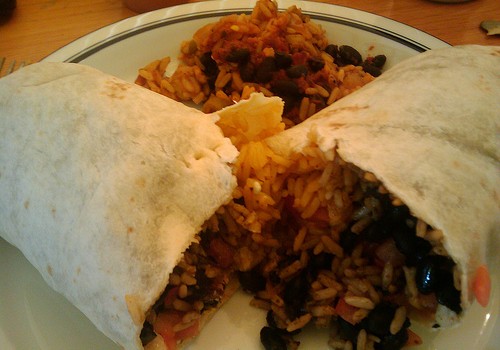
Steak Burrito
A steak burrito is a satisfying mixture of strip steak hot from the grill, creamy sauce made with regular and sour cream, onions, cheese, avocado, and little bits of tomato and lettuce served in a hot flour tortilla. Four or five big bites, and you've downed 1000 calories. There are two ways to handle burritos on a diet. Eat them very rarely. Or eat them as a salad. You don't really save a lot of calories by having the meat, cheese, sour cream, onions, tomatoes, and peppers served on lettuce rather than in a tortilla. But you cut back on carbs so that your body just has to figure out what to do with the fat--the burrito bowl is the way to do if diabetes or prediabetes is part of your reality.
- Important notification about information and brand names used in this slideshow!
- Photo courtesy of @joefoodie by Flickr : www.flickr.com/photos/montage_man/3530240622/
- Bayless, Rick
- Bayless, Deann Groen
- Christopher Hirsheimer (2007). Authentic Mexican: Regional Cooking from the Heart of Mexico. HarperCollins. p. 197. ISBN 978-0-06-137326-8. Retrieved 19 January 2012.

Candy
Candy undoes the hard work of dieting one piece at a time. If you work in an office that keeps a candy bowl, make sure it's not at your desk, and certainly not in easy reach. Out of sight, out of mind certainly applies to candy. Don't fool yourself into thinking you can ration yourself to one piece a day, and if you are on a diet and you have a coworker who keeps a candy dish stocked, ask if it can't be placed in a part of the workplace you do not frequent. Or if your request is ignored, put out your own convenient snack that doesn't have the caloires, like strawberries or nori chips.
- Important notification about information and brand names used in this slideshow!
- Photo courtesy of Jeff Adair by Flickr : www.flickr.com/photos/jeffadair/53127642/
- Rister R. Healing without Medication. Basic Health Publications 2003.
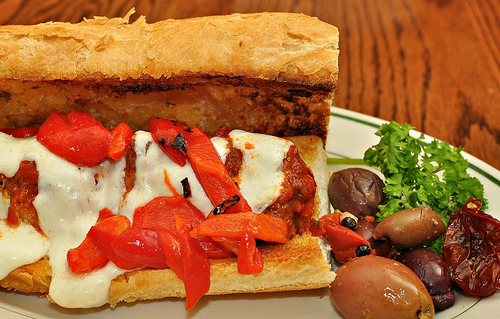
Meatball Marinara
Tomato, garlic, herbs, and onions, finished with a dash of red wine just before the end of the boil--what could be so bad about marinara? This popular Italian sauce really is a great diet food, until you serve it over pasta with meatballs and a shaving of cheese on top. A diet-friendly marinara ditches the pasta and cheese and the meatballs made with bread crumbs and uses the sauce to dress fish, shellfish, or lean grilled meat. It's the combination of fat and starch that is so devastating to your weight-control efforts, not the humble marinara sauce and your choice of protein.
- Important notification about information and brand names used in this slideshow!
- Photo courtesy of jeffreyw by Flickr : www.flickr.com/photos/jeffreyww/6432603233/
- Mario Batali (2007-10-05). "Mario Batali's recipe for marinara sauce on the Serious Eats website". Seriouseats.com. Retrieved 2013-05-03.
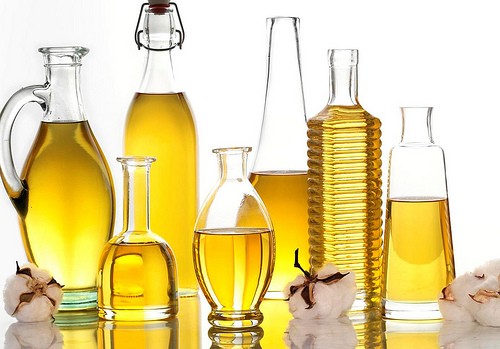
Vegetable Oils (Soybean, Peanut, Palm, Olive)
Every vegetable oil is 100% fat. From a calorie-counting point of view, vegetable oil is pretty much the same as butter or bacon, or actually a little more calorie-laden than bacon. But the real problem with vegetable oil is the kind of fat. Almost every kind of vegetable oil contains more omega-6 fat, the kind that the body uses to make inflamation-causing hormones, than omega-3 fat, the kind that the body uses to make the hormones that limit inflammation. You simply can't eat enough "healthy plant oils" to get your omega-6's and your omega-3's in balance, because every kind of oils except flaxseed oil is higher in omega-6 than omega-3. And what is the most inflamed organ in your body? Belly and buttocks fat! Inflammation traps fluids in fatty tissues so you weigh even more.
- Important notification about information and brand names used in this slideshow!
- Photo courtesy of Cottonseed Oil by Flickr : www.flickr.com/photos/cottonseedoiltour/5052424228/
- Rister R. Healing without Medication. Basic Health Publications 2003.


_f_280x120.jpg)

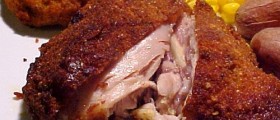
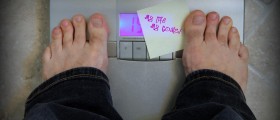

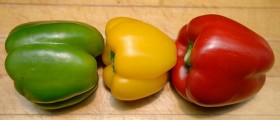
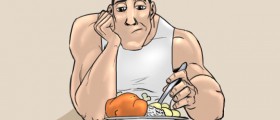

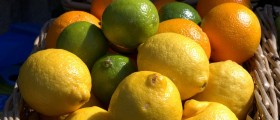

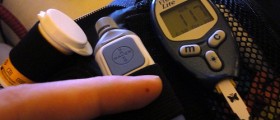

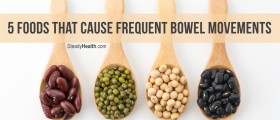
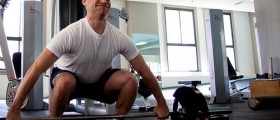
_f_280x120.jpg)
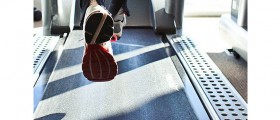
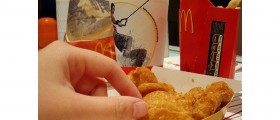


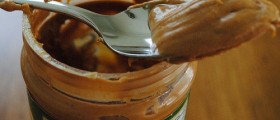


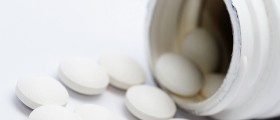
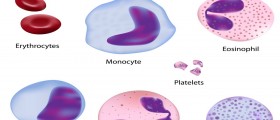
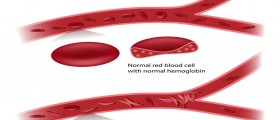
Your thoughts on this
Loading...